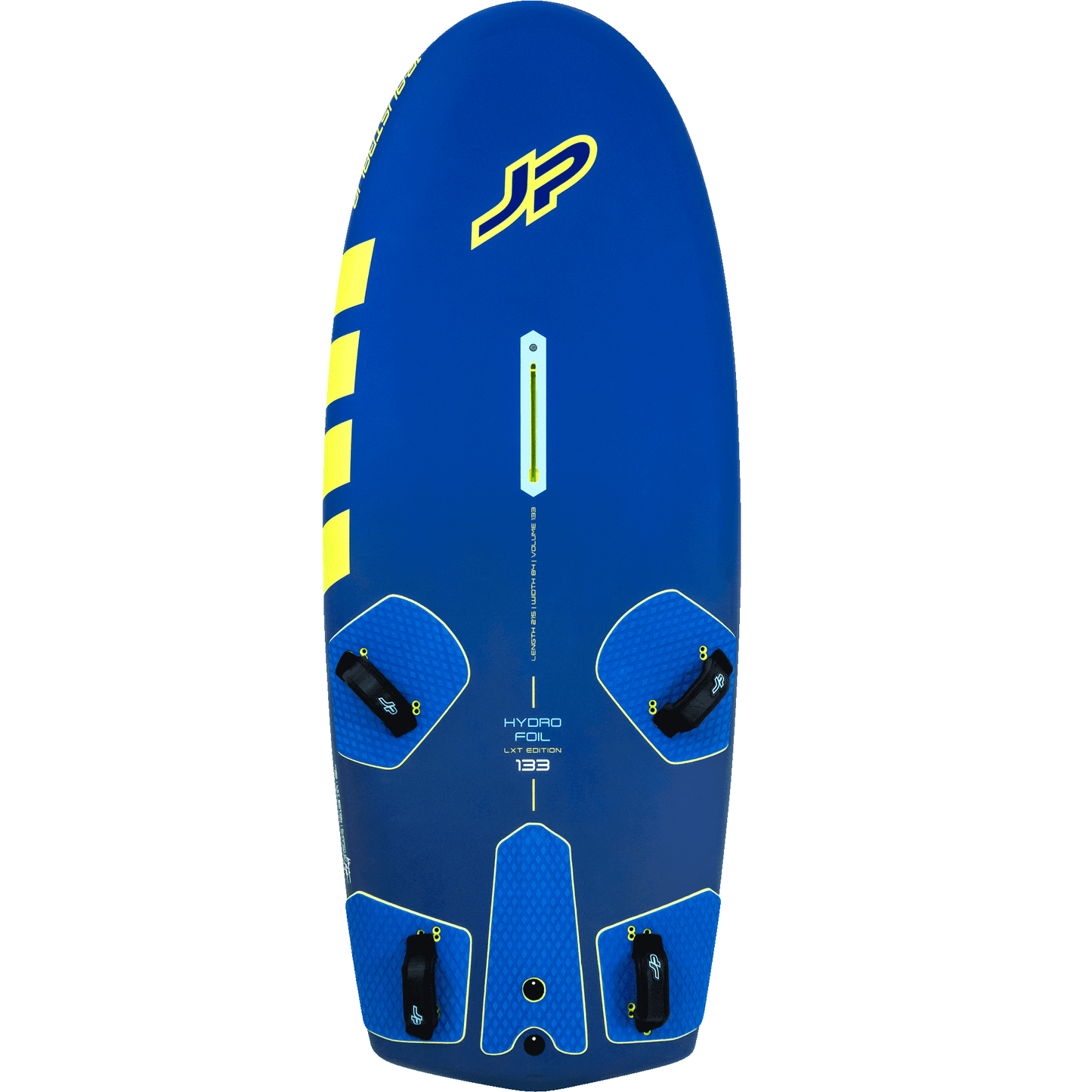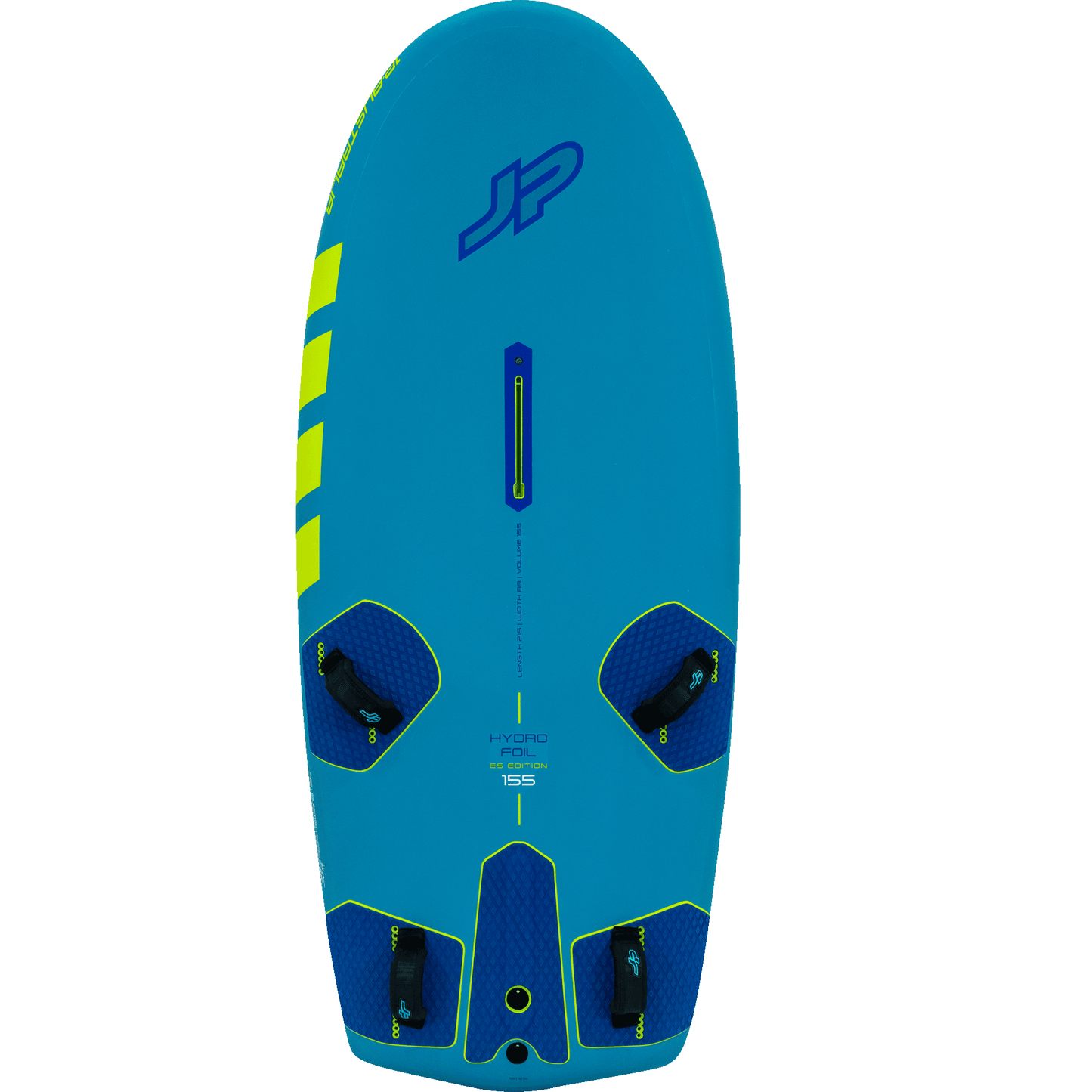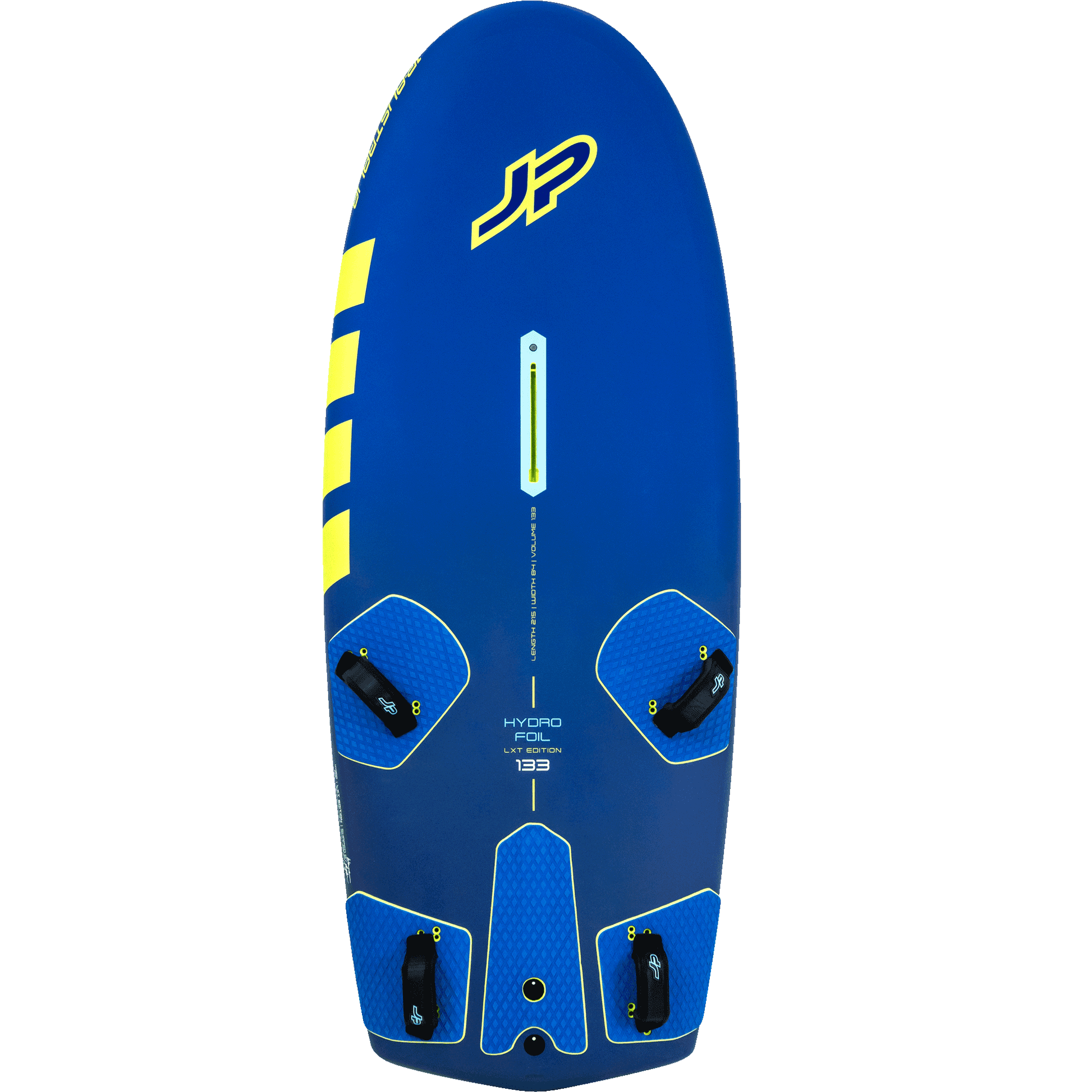JP
JP HydroFoil 2022
JP HydroFoil 2022
Couldn't load pickup availability
JP’s HydroFoils were one of the very first specialised boards for foiling and they were trendsetters right from the start of the foil revolution. The overall range of use and the all-round appeal of the first two generations made them extremely popular and successful on the market. Get ready to meet the third generation! The two boards can best be summarized as user-friendly scaled-down versions of the 'HF Slalom' model. The updates make the brand-new shapes easier to access, to control and to fly. Being super comfortable to ride, they are also more efficient and faster. The 133 and 155 represent JP’s most balanced mix of user-friendliness combined with top foil performance.
The 2021 boards were great and only full-on race designs challenged their performance. So, what was the drive, the motivation to bring new shapes in this segment?
The reason was the success and the feel of the latest developments of JP’s foil performance board: The HydroFoil Slalom is simply incredibly fast yet super comfortable and easy to sail. In fact, this ease is the key to its success. Consequently, shaper Werner Gnigler wanted to transfer these benefits to the recreational foil class, getting rid of all superfluous volume and width. Compare it to regular windsurfing, the same connection exists between the pure performance and the freerace class: once the Slalom boards get substantially better or faster, these advantages are transferred into the Super Sport shapes.
Shaper Werner Gnigler states: “We remained true to our concept, offering a pure foil board. I kept my focus on making fast foiling easy and accessible, but still extremely exciting. Hence, I improved stability, comfort and control because – once airborne – these are the prerequisites for a fast run on all tracks.”
SHAPE DETAILS
Despite being marginally narrower, the proportions and dimensions of the new boards remain similar to their predecessors. The even distribution of volume offered great stability and already helped the “old” 135 and 150 to lift off early. So – even though this did not change – it is important to mention these retained advantages: The shortness keeps the swing weight low for control, adding to that overall balanced feel. In the air, the compact hulls feel very balanced and provide the feel of total control and dominance over the foil.
As a bonus, the volume in the nose provides sufficient float for uphauling on these short boards.
The big changes only reveal themselves on closer inspection and mainly happened in the rail shapes and their combination with the deck contour and cut-outs.
In the forward section, we changed to a round rail with a defined tuck line.
The bevels which were a trademark of the previous shapes are gone. Their forgivingness was traded-in for a quicker response! The rounded rails feature slightly more volume for easier uphauling and provide less drag on occasional touch-downs. They don’t slow down but instantly bounce-off the water, getting you up and flying again in an instant. Overall, they became more efficient and faster, providing a crisper direct feel.
The second big rail shape change happened in the strap area and went hand in hand with an adaption of the deck contour. The predecessors had fuller rails and consequently a flat deck shape which was good for an upright stance. Now, the volume was reduced in the rail providing more dome in the strap area. As a result, the ankle is not overstretched when leaning outboard in order to push and tilt the hull. This also makes it easier to get in and out of the straps. The result of these changes is that it is now much easier to find the perfect stance and you feel totally connected to the board with great leverage over the foil. This added stability and re-designed stance allows you to push your performance and fully exploit the power of the sail. Not only you can ‘ride’ but really ‘work’ the foil.
The cut-outs are totally new.
You will immediately notice that they are surprisingly large, about double the size of the ones found on their predecessors. This design feature was taken from our performance board, the HydroFoil Slalom. The benefit: Less volume and area allow you to sink the tail when pumping and loading up the foil. This results in an easy and instant take off as well as reduced drag on occasional touch-downs.
The thin profile limits drag once airborne and creates as little resistance as possible, which is very important when you are flying because strong gusts don’t affect the trim of the board. Your flight will be very stable and balanced.
133:
The third generation of the shape that started the foil hype for JP: It is still the most all-round size, covering a very wide wind range. It suits most rider weights and levels and works great with all sail sizes except the very biggest and smallest ones. The perfect one-for-all size for most sailors.
155:
Originally, this size was designed for foil races. Compared to pure performance boards, the volume and dimensions are reduced to the necessary maximum. It is the downsized, “freerace”, easy-handling and fun version. It also has a big range but is especially targeted for light wind spots when used by big sailors or with big sails. Thanks to the bigger 6-hole foot strap plug, you can adapt your stap position to a wider variety of foil sizes.
Both shapes come with an additional centre pad. Your foot can ideally shore up on its raised shape which is a great support during gybes and take-off – especially when pumping. It also gives you a guideline for where to place your feet.
Of course they come with JP’ reinforced Foil-Tuttlebox.
|
|
Length (cm)
|
Width (cm)
|
Volume (l)
|
Weight (kg)
|
Fin box
|
Sail |
|
ES 133 |
215
|
84
|
133
|
9.5 +/- 8%
|
Foil-Tuttlebox |
Rec. 4.5-8.6 Ideal 5.5-8.0
|
|
ES 155 |
215 |
89 |
155 |
10.2 +/- 8%
|
Foil-Tuttlebox |
Rec. 5.0-9.6 Ideal 6.0-9.0 |
|
LXT 133 |
215
|
84
|
133
|
8.5 +/- 8%
|
Foil-Tuttlebox |
Rec. 4.5-8.6 Ideal 5.5-8.0
|
|
LXT 155 |
215 |
89 |
155 |
8.9 +/- 8%
|
Foil-Tuttlebox |
Rec. 5.0-9.6 Ideal 6.0-9.0 |
Share



